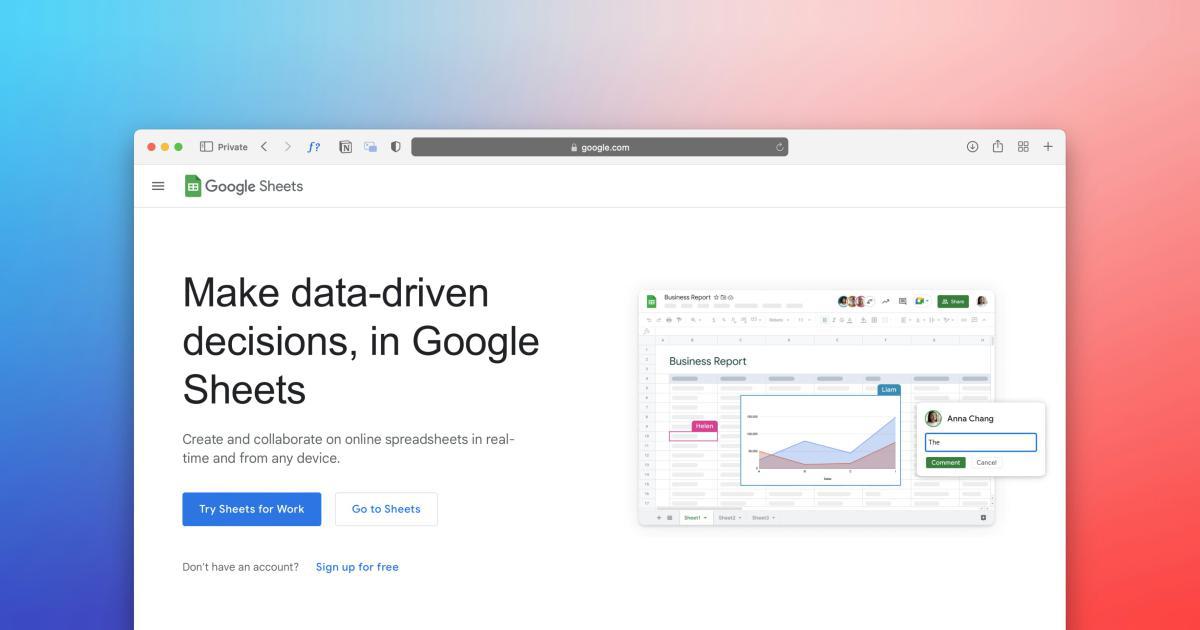Maximizing Profits: How Cross-Site User Behavior Tracking Boosts Revenue


Introduction: Unlocking the Power of Cross-Site User Behavior Tracking
In the ever-evolving digital landscape, businesses are constantly seeking new ways to optimize their operations and drive revenue growth. One powerful strategy that has emerged is the practice of cross-site user behavior tracking. By analyzing the interactions and behaviors of users across multiple online platforms, businesses can gain valuable insights that can be leveraged to improve marketing strategies, enhance customer experiences, and ultimately boost their bottom line.

In this comprehensive article, we will delve into the world of cross-site user behavior tracking, exploring its benefits, implementation strategies, and real-world examples of how leading organizations have harnessed this powerful technique to achieve remarkable results.
Understanding Cross-Site User Behavior Tracking
At its core, cross-site user behavior tracking involves the collection and analysis of data related to user interactions and behaviors across various digital touchpoints, including websites, mobile apps, social media platforms, and more. By aggregating and synthesizing this data, businesses can gain a holistic understanding of their customers' journeys, preferences, and pain points.
The Importance of Cross-Site Tracking
In today's highly competitive digital landscape, businesses must stay ahead of the curve to remain relevant and profitable. Cross-site user behavior tracking plays a crucial role in this endeavor by:
Enhancing Customer Insights: By tracking user behaviors across multiple sites, businesses can develop a more comprehensive understanding of their customers' preferences, pain points, and purchase habits. This information can be used to tailor marketing campaigns, product offerings, and customer experiences to better meet their needs.
Optimizing Marketing Strategies: Cross-site user behavior data can provide valuable insights into the effectiveness of various marketing channels, allowing businesses to allocate their resources more efficiently and maximize their return on investment (ROI).
Improving Customer Retention: By understanding how users engage with their brand across different platforms, businesses can identify ways to enhance the customer experience, foster deeper brand loyalty, and reduce churn rates.
Increasing Revenue: Ultimately, the insights gained from cross-site user behavior tracking can be leveraged to drive targeted marketing campaigns, personalized product recommendations, and optimized sales funnels, all of which can contribute to a significant increase in revenue.
Key Metrics and Data Points
To effectively harness the power of cross-site user behavior tracking, businesses must collect and analyze a range of data points, including:
- User Engagement: Metrics such as time spent on site, bounce rate, and page views can provide insights into how users interact with different digital touchpoints.
- Conversion Rates: Tracking the conversion rates for various actions, such as email sign-ups, purchases, or content downloads, can help identify the most effective marketing and sales strategies.
- Referral Sources: Understanding where users are coming from, whether it's social media, search engines, or other websites, can inform channel optimization and content distribution strategies.
- Device Usage: Analyzing the devices and platforms used by customers can inform the development of responsive and mobile-friendly digital experiences.
- User Segmentation: Grouping users based on demographic, behavioral, or psychographic data can enable personalized marketing and product recommendations.

By combining these data points and leveraging advanced analytics tools, businesses can gain a comprehensive understanding of their customers' behaviors and preferences, ultimately enabling them to make more informed decisions and drive sustainable growth.
Implementing Cross-Site User Behavior Tracking
Implementing an effective cross-site user behavior tracking strategy involves several key steps, each of which requires careful planning and execution.
Establishing a Centralized Data Infrastructure
The foundation of a successful cross-site user behavior tracking strategy is a robust and scalable data infrastructure. This often involves the integration of various data sources, such as website analytics, customer relationship management (CRM) systems, and marketing automation platforms, into a centralized data warehouse or data lake.

By consolidating data from multiple sources, businesses can ensure that all relevant user behavior information is accessible and can be analyzed holistically. This, in turn, enables more accurate insights and informed decision-making.
Tracking User Interactions and Behaviors
To collect meaningful cross-site user behavior data, businesses must implement tracking solutions that can capture user interactions across different digital platforms. This may involve the use of technologies such as web beacons, pixel tags, and server-side tracking, as well as the integration of third-party analytics tools.
It's important to ensure that the tracking methods employed are compliant with relevant data privacy regulations, such as the General Data Protection Regulation (GDPR) and the California Consumer Privacy Act (CCPA), to maintain user trust and avoid legal issues.
Analyzing and Interpreting the Data
Once the user behavior data has been collected, the next step is to analyze and interpret the insights it provides. This may involve the use of advanced data analytics tools and techniques, such as predictive modeling, customer segmentation, and attribution analysis.

By uncovering patterns, trends, and correlations within the data, businesses can develop a deeper understanding of their customers' behaviors and preferences, enabling them to make more informed decisions and optimize their strategies accordingly.
Implementing Data-Driven Strategies
The final step in the cross-site user behavior tracking process is to leverage the insights gained to inform and implement data-driven strategies. This may include:
Personalized Marketing Campaigns: Tailoring marketing messages, product recommendations, and promotional offers based on individual user preferences and behaviors.
Optimized Sales Funnels: Streamlining the customer journey and improving conversion rates by identifying and addressing pain points.
Enhanced Customer Experiences: Designing digital experiences that cater to the specific needs and preferences of target customer segments.
Improved Product Development: Gathering user feedback and insights to inform the creation of products and services that better meet customer needs.

By aligning their business strategies with the insights gained from cross-site user behavior tracking, organizations can unlock new opportunities for growth and profitability.
Real-World Examples: How Businesses Leverage Cross-Site User Behavior Tracking
To illustrate the power of cross-site user behavior tracking, let's examine a few real-world examples of how leading organizations have leveraged this strategy to drive remarkable results.
Case Study: Amazon's Personalized Recommendations
Amazon, the e-commerce giant, is renowned for its highly personalized product recommendations. By tracking user behavior across its website, mobile app, and other digital touchpoints, Amazon can build comprehensive user profiles and deliver tailored recommendations that significantly boost sales and customer satisfaction.

According to a study by McKinsey, Amazon's personalized recommendations account for an estimated 35% of its total revenue. This success can be attributed to the company's ability to analyze cross-site user behavior and leverage those insights to create a seamless and highly engaging shopping experience.
Case Study: Netflix's Content Optimization
Netflix, the streaming entertainment platform, is another prime example of a company that has harnessed the power of cross-site user behavior tracking. By analyzing user interactions across its various platforms, including the website, mobile app, and connected TV devices, Netflix can gain a deep understanding of its users' content preferences and viewing habits.

This data-driven approach enables Netflix to optimize its content recommendations, introduce new shows and movies that are more likely to resonate with its audience, and continuously improve the overall user experience. As a result, Netflix has achieved remarkable success, with over 200 million subscribers worldwide and a reputation for delivering personalized and engaging content.
Case Study: Spotify's Personalized Playlists
Spotify, the leading music streaming service, is renowned for its ability to provide users with personalized playlists and recommendations. By tracking user behavior across its website, mobile app, and desktop application, Spotify can build detailed user profiles and deliver curated content that aligns with each individual's musical preferences.

This strategy has been a key driver of Spotify's growth, with the company reporting that its personalized playlists, such as Discover Weekly and Release Radar, account for a significant portion of its total listening hours. By leveraging cross-site user behavior data, Spotify has been able to create a highly engaging and personalized music experience that keeps users coming back.
Overcoming Challenges and Ensuring Privacy
While the benefits of cross-site user behavior tracking are well-documented, there are also several challenges and privacy concerns that businesses must address to ensure the success and sustainability of their efforts.
Data Privacy and Compliance
One of the primary concerns with cross-site user behavior tracking is the issue of data privacy and compliance with relevant regulations, such as the GDPR and CCPA. Businesses must take proactive steps to ensure that they are collecting, storing, and using customer data in a manner that is transparent, secure, and in accordance with the law.

This may involve implementing robust data governance policies, obtaining explicit user consent, and providing clear and accessible privacy disclosures. Failure to address these concerns can result in significant legal and reputational consequences.
Technical Challenges and Integration
Implementing a comprehensive cross-site user behavior tracking system can also present technical challenges, such as integrating data from multiple sources, ensuring data accuracy and consistency, and scaling the infrastructure to handle large volumes of data.

Businesses must carefully evaluate the available technologies and tools, and invest in the necessary technical expertise and resources to overcome these hurdles and ensure the smooth and efficient operation of their cross-site tracking initiatives.
Balancing Personalization and Privacy
As businesses strive to leverage cross-site user behavior data to deliver more personalized experiences, they must also strike a delicate balance between personalization and privacy. Customers have become increasingly aware of the data collection practices of businesses and are more cautious about sharing their personal information.

To maintain the trust of their customers, businesses must be transparent about their data collection and usage practices, provide clear options for opting out of personalized experiences, and ensure that their personalization efforts do not infringe on individual privacy rights.
Conclusion: Embracing the Future of Cross-Site User Behavior Tracking
As the digital landscape continues to evolve, the importance of cross-site user behavior tracking will only continue to grow. By harnessing the power of this strategy, businesses can gain a competitive edge, enhance customer experiences, and drive sustainable revenue growth.
While the implementation of cross-site user behavior tracking may present challenges, the potential rewards far outweigh the risks. By embracing this data-driven approach and addressing the concerns around privacy and compliance, businesses can unlock new avenues for growth and innovation, ultimately positioning themselves for long-term success in the digital age.